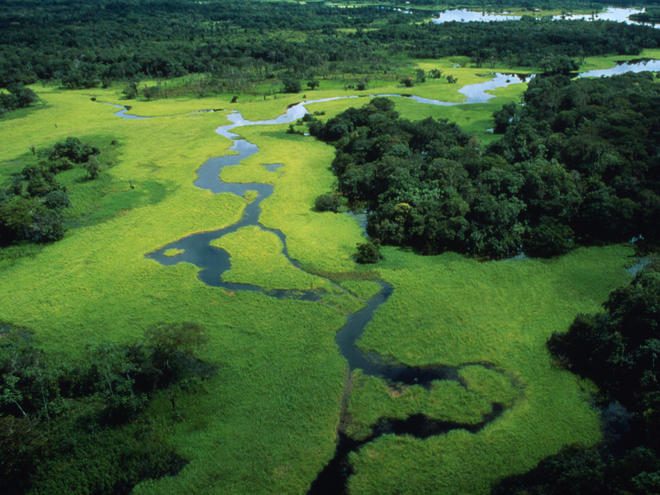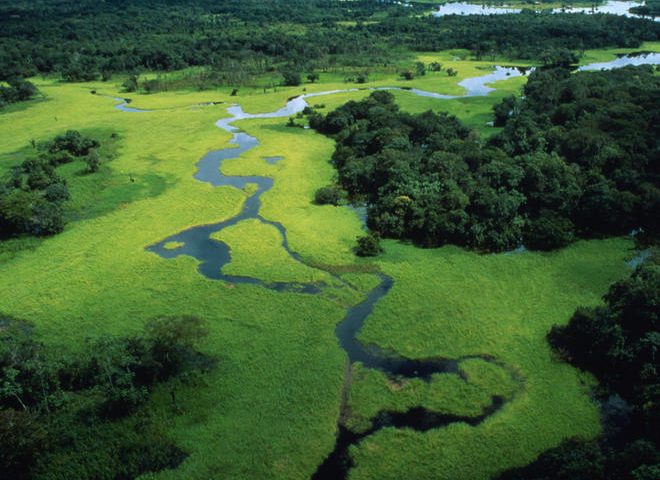This week, conservation takes center stage as 6,000 global experts dive deep into the issues that will define the physical future of our planet. And with the all the far-reaching impacts of these decisions affecting the long-term sustainability of our planet, it’s a gathering that cannot come soon enough.
The World Conservation Congress is the single largest conservation event in the world. It brings together a broad cross-section of conservation minds. Leaders and decision-makers from governments, businesses, indigenous organizations, academia, and NGOs are here to identify evolving trends, current threats, and innovative solutions to the challenges we collectively face in safeguarding biodiversity and protecting ecosystems that provide life-supporting services like clean water and air.

Expectations are high as momentum is on our side. Last year, international leaders set a collective agenda to end poverty and ensure sustainability remains front and center when they adopted the United Nation’s Sustainable Development Goals. And, some 195 nations came together in a concerted effort to combat climate change and prepare our communities for its impacts, with the signing of the Paris Agreement. On the heels of these two ambitious agreements, this year’s Congress looks to set a global agenda for how we manage our natural environment for human, social and economic development – and do so in a way that lives up to the promise set by these pacts.
It’s no small task. And like all significant challenges the world faces today, we need the right mix people with the right kind of talent and a diversity of perspectives to drive the kinds of innovative solutions needed to get us back on course. At the Congress, delegates are building relationships among unlikely partners – from local communities to multi-national companies to global NGOs – to identify the kinds of disruptive solutions we need.
We are sharing our insights into new technologies that can help plan for future growth, making sure the pace of development does not exceed the pace of conservation. We’re driving solutions with unleashed creativity, grounding them in sound science, and redefining the way we approach conservation at scale.
I’m here talking about how WWF works with our partners to help drive conservation, using science to accelerate biodiversity protections while helping improve local communities.
We’re ramping up high-tech solutions for combatting wildlife poaching. The illegal taking of wildlife has sky-rocketed in recent years, largely driven by demand in Asia. It’s an incredible threat to tigers, rhinos, elephants, gorillas and other extraordinary wildlife in Africa and Asia. With sky-high price tags for horns, tusks and other body parts, these animals don’t stand a chance unless we can stem the tide and reverse these trends.
Made possible by a grant from Google.org, WWF’s Wildlife Crime and Technology Project is using adapted and new technologies to create seamless systems to protect wildlife from poachers. We are arming parks and reserves with thermal cameras and human-detection software, equipping rangers with devices to track the presence and movement of wildlife, and aggressively testing new uses for drones as part to our anti-poaching efforts. By deploying these and other technologies, we are leveling the playing field for rangers and actively protecting threatened species.
Science can also quench the thirst of a water-loving planet. Across the globe, climate-driven droughts are increasing in frequency and intensity. In recent years, heat waves and droughts in the Midwestern US, India, Brazil, and California set records. As these events grow more severe, we’ll likely see increased conflicts among industry, farmers, city-dwellers and the environment as the amount of water available for consumption progressively declines.
We need to manage these resources with a transparent and collaborative science-based approach. It’s our best hope for escaping future water wars and the scarcity trap. We need to embrace these new approaches, such as WWF’s community-based Basin Report Cards, in which participants create a shared knowledge base to actively manage their local water supply sustainably and adaptively over time, even in the face of a changing climate.
We must continue conserving the reefs that foster biodiversity and feed local communities. For 3.1 billion people around the world, fish is an essential source of protein, accounting for almost 20% of the annual intake of animal protein. For those who are highly dependent on marine sources of protein, the local fish market is the nearest coral reef. Coral reefs provide the most diverse habitat of all marine ecosystems, housing one quarter of marine species in only one-tenth of the ocean’s surface area. In these places, we must meet human dietary needs while ensuring the long-term persistence of the diversity of species. This requires a mix of social and natural science to get the balance right.
In Indonesia, WWF and its partners have established Marine Protected Areas designed to safeguard biodiversity, ensure productive fisheries and increase human well-being. Carefully established monitoring programs for social and environmental outcomes indicate that in many cases, the triple bottom line is possible and sustainable.
As this week’s Congress points out, it’s not an understatement to say our planet is at a crossroads when it comes to conserving nature. Decisions we make in the coming years – and even this week – will have long-term impact on the health and sustainability of the world we leave to those who follow in our steps. As we discuss, debate, and decide on those actions, it’s critical we ensure good science guides the way.
Enviroshop is maintained by dedicated NetSys Interactive Inc. owners & employees who generously contribute their time to maintenance & editing, web design, custom programming, & website hosting for Enviroshop.
